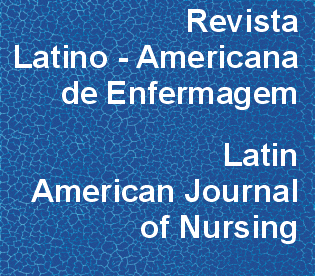Fatores demográficos e indicadores de risco de acidente vascular encefálico: comparação entre moradores do município de Fortaleza e o perfil nacional
DOI:
https://doi.org/10.1590/S0104-11692010000400007Palavras-chave:
Enfermagem, Epidemiologia, Acidente Cerebral VascularResumo
O objetivo deste estudo foi comparar fatores demográficos e indicadores de risco para o aparecimento de acidente vascular encefálico (AVE), entre o município de Fortaleza e outros municípios, com base em estudos nacionais. É um estudo transversal, desenvolvido com 180 pacientes que apresentaram o diagnóstico de AVE, no período de outubro de 2007 a abril de 2008. Referidos pacientes foram captados em nove instituições públicas. Para a coleta de dados, aplicou-se formulário, por meio de entrevista, ao paciente e/ou acompanhante. Para análise comparativa dos dados epidemiológicos, foram utilizados os seguintes testes estatísticos: teste qui-quadrado para aderência e teste t para média. Os portadores de AVE avaliados em Fortaleza são mais jovens e apresentaram maiores índices de hipertensão arterial. Em contrapartida, são menos etilistas e tabagistas. É necessário ampliar o conhecimento sobre a saúde da população brasileira, estratificada por regiões, já que existem fatores influenciadores específicos para a ocorrência do acidente vascular encefálico.Downloads
Os dados de download ainda não estão disponíveis.
Downloads
Publicado
2010-08-01
Edição
Seção
Artigos Originais
Licença
Os direitos autorais são de propriedade exclusiva da revista, transferidos por meio da Declaração de Transferência de Direitos Autorais (presente no Formulário Individual de Declarações) assinada pelos autores. Para a utilização dos artigos, a RLAE adota a Licença Creative Commons, CC BY-NC Atribuição não comercial (resumo ou código completo da licença). Com essa licença é permitido acessar, baixar (download), copiar, imprimir, compartilhar, reutilizar e distribuir os artigos, desde que para uso não comercial e com a citação da fonte, conferindo os devidos créditos autorais a Revista Latino-Americana de Enfermagem. Nesses casos, nenhuma permissão é necessária por parte dos autores ou dos editores.Como Citar
Cavalcante, T. F., Moreira, R. P., Araujo, T. L. de, & Lopes, M. V. de O. (2010). Fatores demográficos e indicadores de risco de acidente vascular encefálico: comparação entre moradores do município de Fortaleza e o perfil nacional . Revista Latino-Americana De Enfermagem, 18(4), 703-708. https://doi.org/10.1590/S0104-11692010000400007



